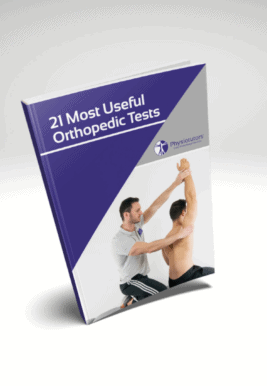Learn
Crossed Leg Test | Syndesmosis Injury Assessment
A high ankle or syndesmotic sprain is an injury to the distal tibiofibular syndesmosis. The distal joint is stabilized by several ligaments. The injury most often occurs in sports and return to play times might be twice as long compared to usual ankle sprains.
According to Hunt et al. (2015), the mechanism of injury is a “forced external rotation of the foot while in a dorsiflexed position. The talus forces the fibula to separate from the tibia, rotate externally, and displace posteriorly, resulting in abnormal stress on the syndesmotic ligaments.
Only one study examined the sensitivity and specificity of this test, so caution is required. Großterlinden et al. (2016) obtained a sensitivity score of 14% and a specificity of 83%. Note that the supposed mechanism is similar to the squeeze test and shares a similar specificity.
Due to the scarcity of evidence, the test is of questionable utility to this day.
For the crossed leg test your patient is seated and crosses the affected leg over the knee of the contralateral leg. The pivot point should be around the middle or distal third of the lower leg. The patient pushes on his or her knee to see if this reproduces symptoms at the ankle. Pushing the knee is unnecessary when there is pain by just placing the leg over the other. When pain occurs at the ankle, the test is considered positive.
21 OF THE MOST USEFUL ORTHOPAEDIC TESTS IN CLINICAL PRACTICE

Other common orthopedic tests for syndesmosis injuries are:
- Dorsiflexion External Rotation Stress Test / Kleiger’s Test
- Syndesmosis Ligament Tenderness
- Cotton Test
- Fibular Translation Test
- Syndesmosis Signs & Symptoms
- Heel Thump Test
References
Like what you’re learning?
BUY THE FULL PHYSIOTUTORS ASSESSMENT BOOK
- 600+ Pages e-Book
- Interactive Content (Direct Video Demonstration, PubMed articles)
- Statistical Values for all Special Tests from the latest research
- Available in 🇬🇧 🇩🇪 🇫🇷 🇪🇸 🇮🇹 🇵🇹 🇹🇷
- And much more!








